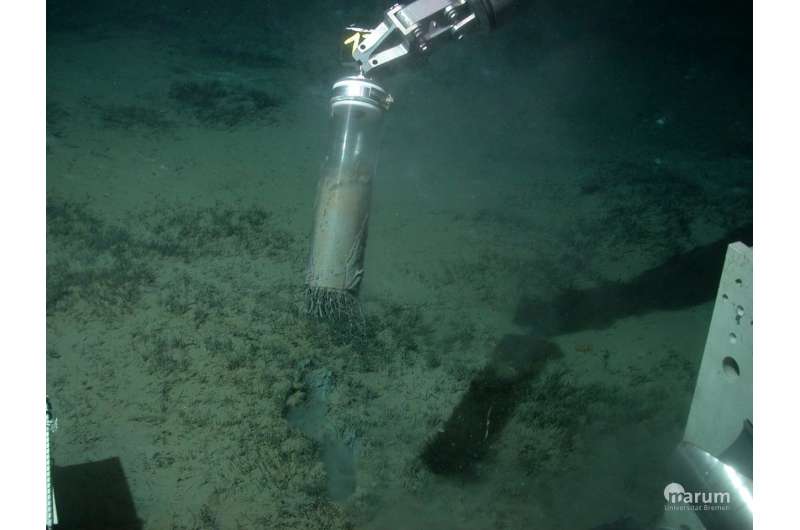Observing the development of a deep-sea greenhouse gas filter

In a long-term study, marine scientists from Bremen have for the first time observed the slow colonization of the crater around a deep-sea mud volcano after its eruption. The first settlers are tiny organisms that eat methane escaping from the volcano, preventing this greenhouse gas from reaching the atmosphere. The present study describes how the colonization of the mud volcano proceeds and how the tiny methane-munchers get going.
Large quantities of the greenhouse gas methane are stored in the seabed. Fortunately, only a small fraction of the methane reaches the atmosphere, where it acts as a climate-relevant gas, as it is largely degraded within the sediment. This degradation is carried out by a specialized community of microbes, which removes up to 90 percent of the escaping methane. Thus, these microbes are referred to as the "microbial methane filter." If the greenhouse gas were to rise through the water and into the atmosphere, it could have a significant impact on our climate.
But the microbes aren't so efficient everywhere. On sites of the seafloor that are more turbulent than most others—for example, gas seeps or so-called underwater volcanoes—the microbes remove just one-tenth to one-third of the emitted methane. Why is that? Emil Ruff and his colleagues from the Max Planck Institute for Marine Microbiology and the University of Bremen aimed to answer this question.
Methane consumption around a mud volcano

In the North Sea off Norway at 1250 meters water depth lies the Håkon Mosby mud volcano. There, warm mud from deeper layers rises to the surface of the seafloor. In a long-term experiment, Ruff and his colleagues filmed the eruption of the mud, took samples and examined them closely. "We found significant differences in the different communities on-site. In fresh, recently erupted mud, there were hardly any organisms. The older the mud, the more life it contained," says Ruff. Within a few years after the eruption, the number of microorganisms, as well as their diversity, increased tenfold. Also, the metabolic activity of the microbial community increased significantly over time. While there were methane consumers even in the young mud, efficient filtering of the greenhouse gas seems to occur only after decades.
"This study has given us new insights into these unique communities," says Ruff. "But it also shows that these habitats need to be protected. If the methane-munchers are to continue to help remove the methane, then we must not destroy their habitats with trawling and deep-sea mining. These habitats are almost like a rainforest—they take decades to grow back after a disturbance."
More information: S. E. Ruff et al, In situ development of a methanotrophic microbiome in deep-sea sediments, The ISME Journal (2018). DOI: 10.1038/s41396-018-0263-1
Journal information: ISME Journal
Provided by Max Planck Society




















